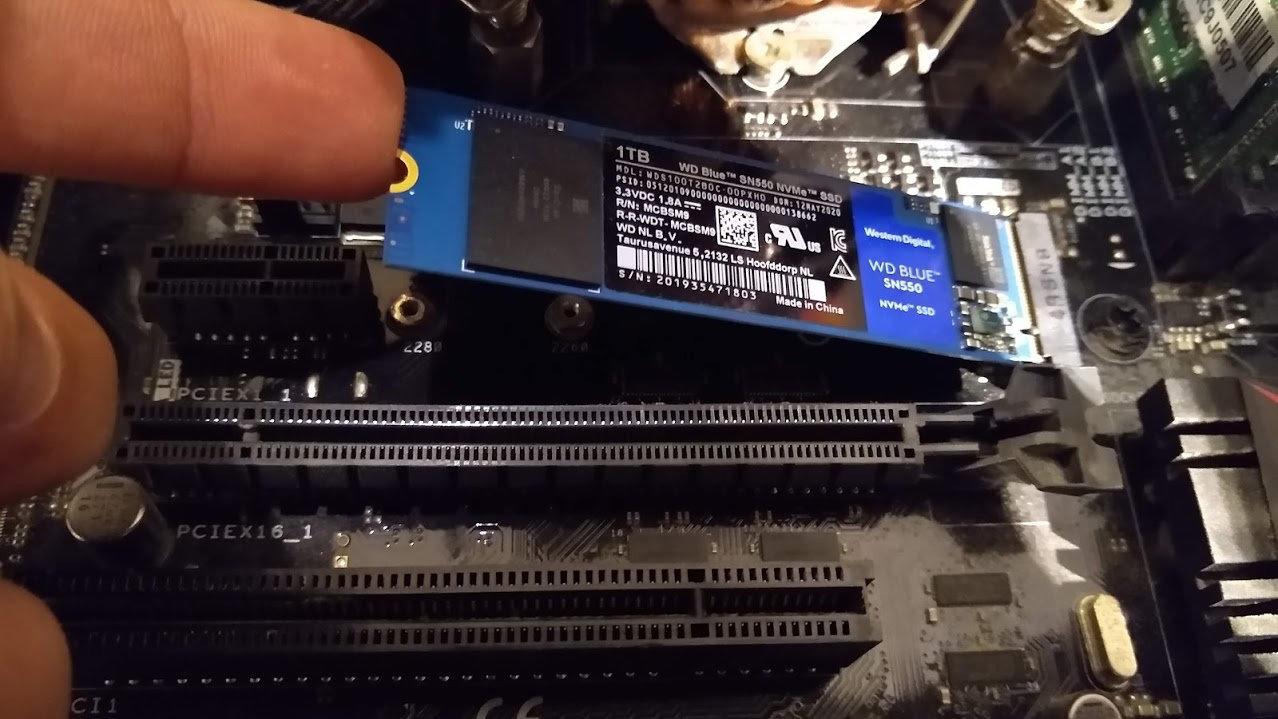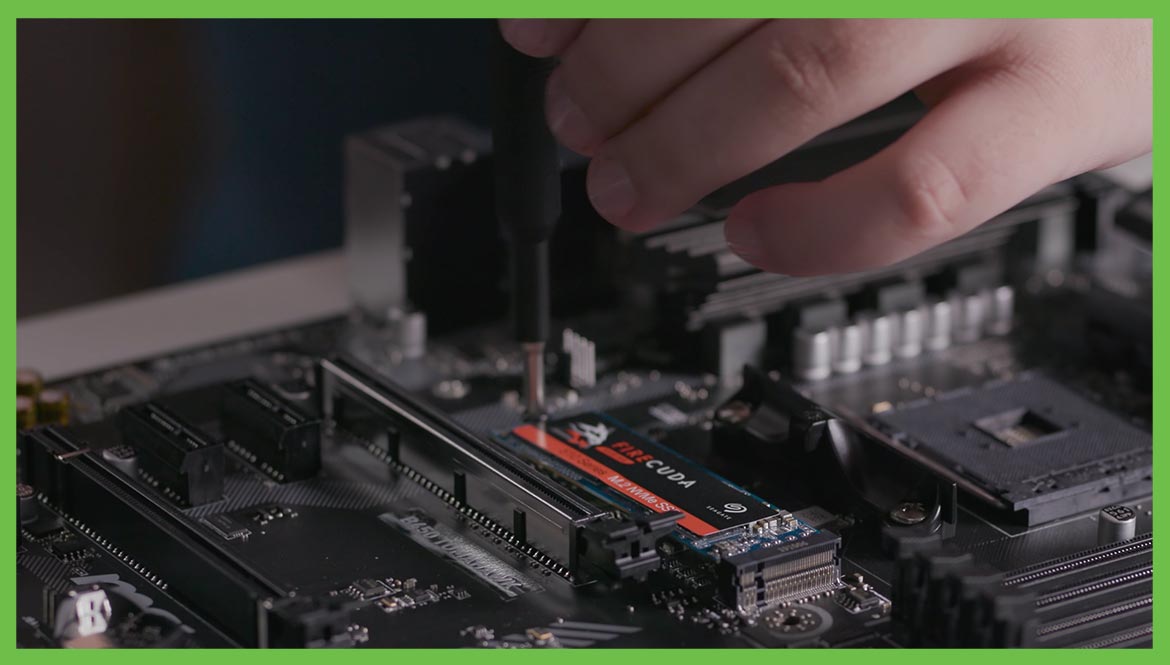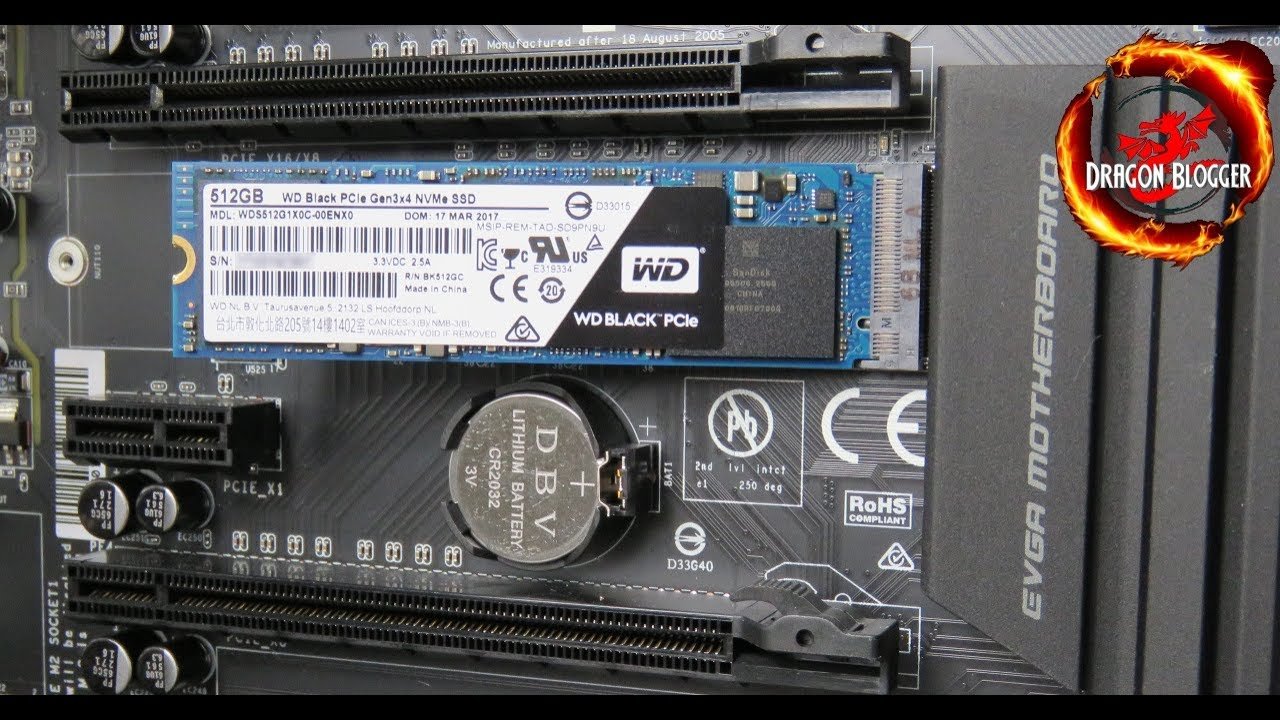To install a PCIe SSD, turn off your computer and unplug it. Open the case, locate the PCIe slot, and insert the SSD securely.
Installing a PCIe SSD can significantly enhance your computer’s performance. These drives offer faster read and write speeds compared to traditional hard drives. Upgrading to a PCIe SSD can reduce boot times and improve application load times. This process is straightforward, even for beginners.
With just a few tools and steps, you can transform your system’s speed and efficiency. Ensure you have the right SSD and compatible motherboard before starting. This guide will walk you through the installation process, ensuring a smooth upgrade. Prepare your workspace, gather your tools, and let’s get started on enhancing your computer’s performance.

Credit: www.youtube.com
Introduction To Pcie Ssds
PCIe SSDs, or Peripheral Component Interconnect Express Solid State Drives, are fast storage devices. They connect directly to the motherboard. This technology speeds up data transfer significantly compared to traditional drives.
Understanding PCIe SSDs can help you upgrade your computer’s performance. They are essential for gaming, video editing, and heavy software applications.
The Evolution Of Storage Solutions
Storage technology has changed a lot over the years. Here’s a brief look:
| Storage Type | Year Introduced | Speed (MB/s) |
|---|---|---|
| HDD (Hard Disk Drive) | 1956 | 100-200 |
| SSD (Solid State Drive) | 1991 | 200-550 |
| PCIe SSD | 2010 | 1000-7000+ |
The transition from HDD to SSD marked a huge leap in speed. PCIe SSDs take it a step further. They offer even faster read and write speeds. This makes them ideal for modern computing tasks.
Benefits Of Upgrading To Pcie Ssd
Upgrading to a PCIe SSD brings many advantages:
- Speed: PCIe SSDs are much faster than HDDs.
- Performance: They improve overall system performance.
- Durability: No moving parts make them less prone to damage.
- Low Power Consumption: They use less power than traditional drives.
Here’s a quick comparison of performance:
- Boot times are significantly shorter.
- Loading games and applications is much quicker.
- File transfer speeds reach new highs.
Switching to a PCIe SSD can transform your computer experience. Enjoy faster speeds and improved reliability. Upgrade today for the best performance!
Essential Tools And Preparations
Installing a PCIe SSD can boost your computer’s performance. Before starting, gather the right tools and prepare your workspace. This section covers essential tools and safety tips.
Gathering The Necessary Tools
To install a PCIe SSD, you need a few tools. Here’s a list:
- Phillips-head screwdriver: For opening your computer case.
- Anti-static wrist strap: Prevents static electricity damage.
- Flashlight: Helps see inside the case.
- Thermal paste: Needed for some SSDs.
- PCIe SSD: The drive you want to install.
Safety Precautions Before Installation
Safety is crucial when working inside your computer. Follow these steps:
- Turn off your computer and unplug it.
- Wear an anti-static wrist strap.
- Work in a clean, dry area.
- Avoid touching the metal parts of the computer.
- Handle the SSD by its edges.
These precautions help protect your components. Always prioritize safety during installation.
Understanding Pcie Ssd Compatibility
Installing a PCIe SSD requires checking compatibility first. Not all SSDs fit all systems. Ensure your motherboard supports the type of SSD you choose.
Motherboard Slot Types
Different motherboards have various slot types for SSDs. Here are the common types:
| Slot Type | Key Features |
|---|---|
| M.2 | Small form factor, supports NVMe and SATA SSDs. |
| PCIe x4 | Standard slot for high-speed NVMe SSDs. |
| U.2 | Connects enterprise-level SSDs for servers. |
Check your motherboard’s manual to find the correct slot type. This ensures the SSD fits properly.
Checking System Requirements
Each SSD has specific system requirements. Verify these before buying:
- Motherboard Compatibility: Confirm the SSD works with your motherboard.
- BIOS Version: Update your BIOS for new SSD support.
- Operating System: Ensure your OS supports the SSD model.
- Power Supply: Check if your power supply can handle the SSD.
Review the manufacturer’s website for detailed specifications. This prevents issues during installation.
Step-by-step Installation Guide
Installing a PCIe SSD is simple and quick. This guide will help you through each step. Follow these instructions closely for a successful installation.
Opening The Computer Case
Start by gathering your tools. You will need:
- Philips screwdriver
- Anti-static wrist strap (optional)
Now, follow these steps:
- Power off your computer.
- Unplug all cables.
- Place the computer on a flat surface.
- Remove the screws from the case side panel.
- Carefully slide off the side panel.
Take care not to touch any components inside the case.
Locating The Pcie Slot
Find the PCIe slots on your motherboard. These are usually near the CPU. Look for the long slots that resemble this:
| Slot Type | Length | Common Use |
|---|---|---|
| PCIe x1 | Short | Network cards |
| PCIe x4 | Medium | Storage controllers |
| PCIe x16 | Longest | Graphics cards |
Identify an available PCIe x4 or x16 slot for your SSD.
Securely Installing The Ssd
Now, it’s time to install the SSD. Follow these steps:
- Remove the SSD from its packaging.
- Align the SSD with the PCIe slot.
- Gently push the SSD into the slot until it clicks.
- Use a screw to secure the SSD, if needed.
Double-check that the SSD is firmly in place. Close the computer case by reversing the earlier steps. Ensure all screws are tight.
Reconnect your cables and power on the computer. The SSD should be recognized automatically.
Initializing And Formatting The New Ssd
After installing your PCIe SSD, it’s time to initialize and format it. This step prepares the drive for use. Proper formatting ensures your SSD works efficiently.
Accessing Disk Management
To access Disk Management, follow these simple steps:
- Press Windows + X on your keyboard.
- Select Disk Management from the menu.
In Disk Management, you will see all your drives. Your new SSD should appear as unallocated space.
Partitioning The Drive
Partitioning divides your SSD into sections. Each section can store data separately. Here’s how to partition your new SSD:
- Right-click on the unallocated space.
- Select New Simple Volume.
- Follow the wizard instructions.
Choose the size of the partition. You can use the entire space or only a part of it.
Next, assign a drive letter. This letter helps you identify the SSD. Choose a letter that is easy to remember.
Finally, format the partition:
- Select NTFS as the file system.
- Check Perform a quick format.
- Click Finish to complete the process.
Your PCIe SSD is now ready for use. Enjoy faster loading times and improved performance!

Credit: www.techradar.com
Troubleshooting Common Installation Issues
Installing a PCIe SSD can be tricky. Many users face common problems. This section covers solutions to these issues. Let’s dive into troubleshooting!
Resolving Detection Problems
Detection problems often arise after installation. Here are steps to fix them:
- Check Connections: Ensure the SSD is securely connected. Remove and reinsert it to confirm.
- BIOS Settings: Access the BIOS. Check if the SSD appears in the storage section.
- Driver Updates: Update your motherboard drivers. Outdated drivers can cause detection issues.
- Try a Different Slot: Move the SSD to another PCIe slot. Some slots may be faulty.
Follow these steps carefully. Most detection problems get resolved this way.
Fixing Boot Issues
Boot issues can occur after installing a PCIe SSD. Here’s how to address them:
- Check Boot Order: Enter BIOS. Make sure the SSD is set as the primary boot device.
- Secure Installation: Ensure the SSD is properly seated in its slot. Loose connections can cause boot failures.
- Format the SSD: If the SSD is new, format it using Disk Management. This prepares it for use.
- Run Startup Repair: Use a Windows installation media. Select “Repair your computer” to fix startup problems.
Resolving boot issues may take time. Follow these steps for a successful setup.
Maintaining Your Pcie Ssd For Longevity
Keeping your PCIe SSD in top shape extends its lifespan. Proper maintenance ensures optimal performance. Follow these tips for reliable and efficient storage.
Regular Software Updates
Software updates can boost your SSD’s performance. They often include fixes and improvements. Here’s how to keep your SSD updated:
- Check for updates from your SSD manufacturer.
- Enable automatic updates on your operating system.
- Update your firmware regularly.
These actions help maintain your SSD’s efficiency. Always back up your data before updates. This prevents data loss during the process.
Best Practices For Ssd Health
Adopting best practices supports your SSD’s health. Consider the following tips:
- Avoid full capacity: Keep at least 10-20% free space.
- Use TRIM command: This helps manage unused space.
- Limit write cycles: Write data efficiently to prolong life.
- Monitor temperature: Keep it cool to prevent overheating.
- Disable defragmentation: SSDs don’t need it.
Here’s a quick reference table for SSD health:
| Tip | Description |
|---|---|
| Avoid Full Capacity | Maintain free space for performance. |
| Use TRIM | Helps manage storage efficiently. |
| Limit Write Cycles | Extend SSD lifespan. |
| Monitor Temperature | Prevent overheating issues. |
| Disable Defragmentation | Not needed for SSDs. |
Implement these practices for a healthy PCIe SSD. Regular maintenance ensures it runs smoothly for years.

Credit: www.seagate.com
Frequently Asked Questions
How Do I Choose The Right Pcie Ssd?
Selecting the right PCIe SSD depends on your needs. Consider speed, capacity, and compatibility with your motherboard.
Can I Install A Pcie Ssd Myself?
Yes, installing a PCIe SSD is straightforward. Follow manufacturer guidelines and use proper tools for a successful installation.
What Tools Do I Need For Installation?
You typically need a screwdriver, anti-static wrist strap, and possibly thermal paste for optimal heat dissipation.
How Long Does The Installation Take?
Installation usually takes about 15 to 30 minutes. This includes opening the case and securing the SSD.
Will A Pcie Ssd Improve Performance?
Absolutely! A PCIe SSD significantly enhances data transfer speeds, improving overall system performance and responsiveness.
Conclusion
Installing a PCIe SSD can significantly enhance your system’s performance. By following the steps outlined in this guide, you can ensure a smooth installation process. Remember to handle components carefully and follow manufacturer instructions. Enjoy faster load times and improved efficiency once your SSD is up and running.
Happy computing!
